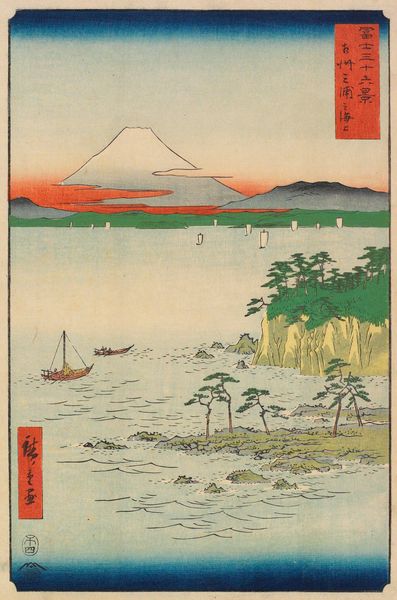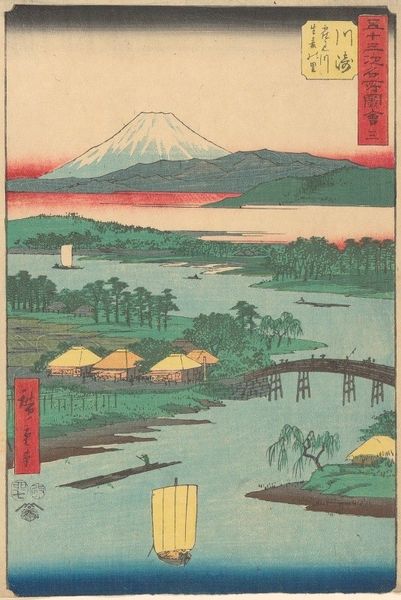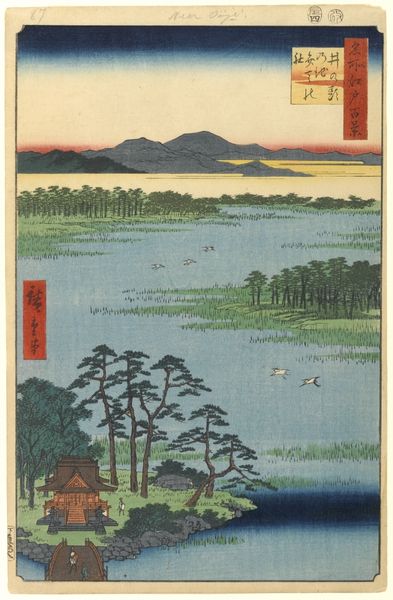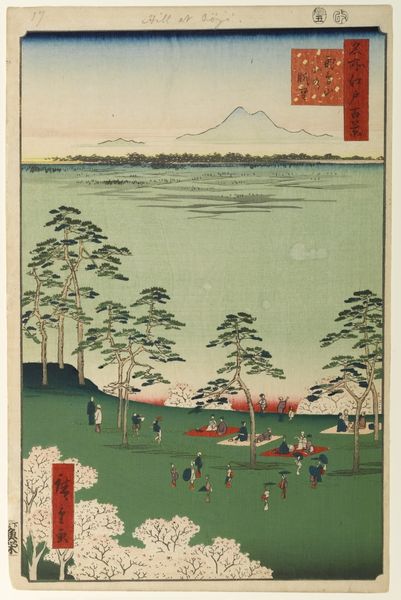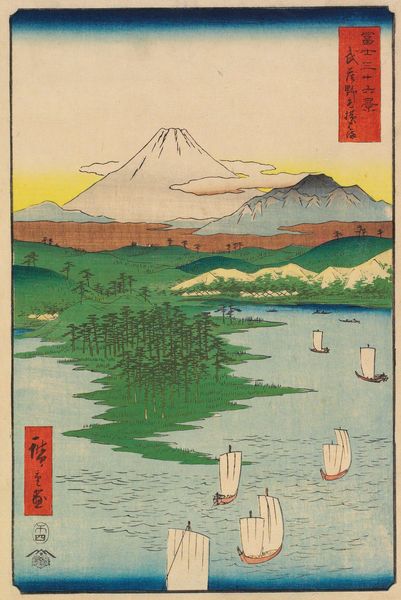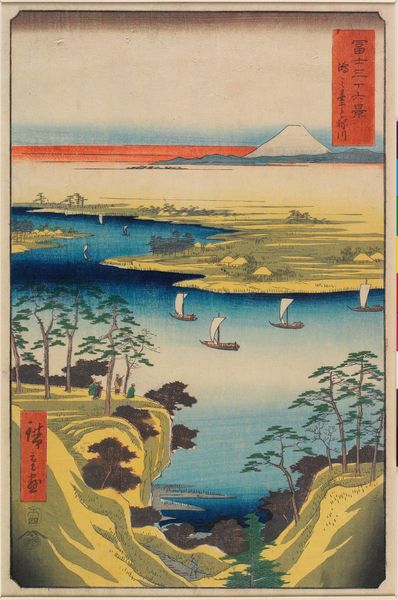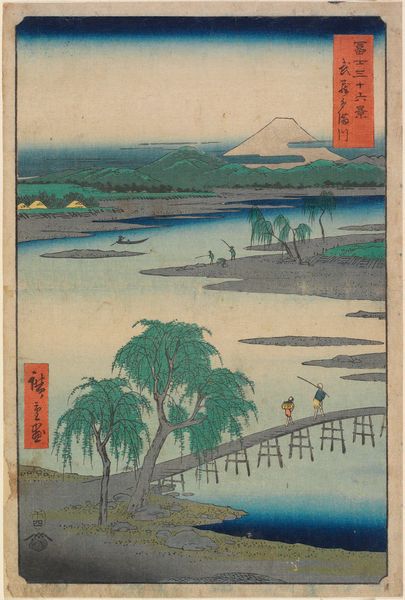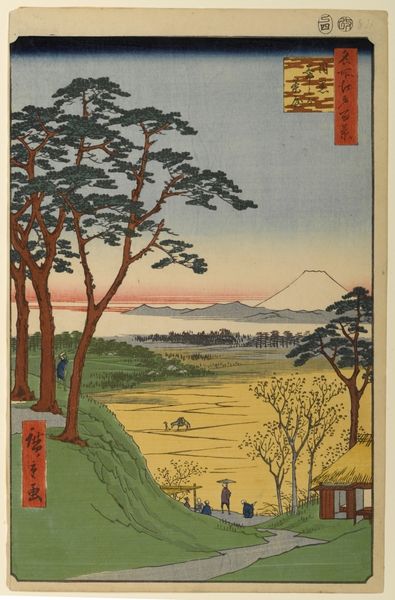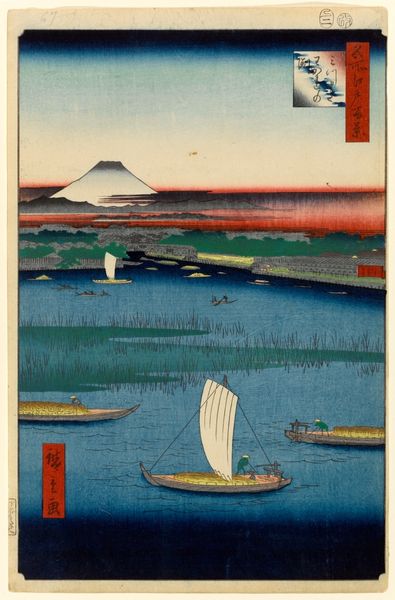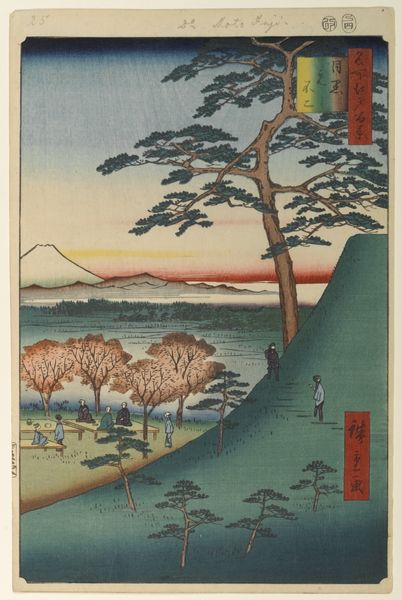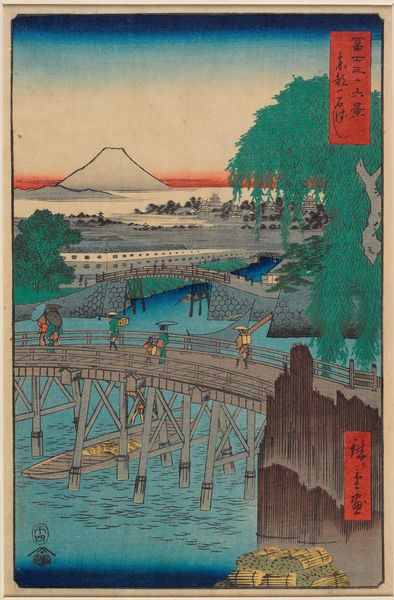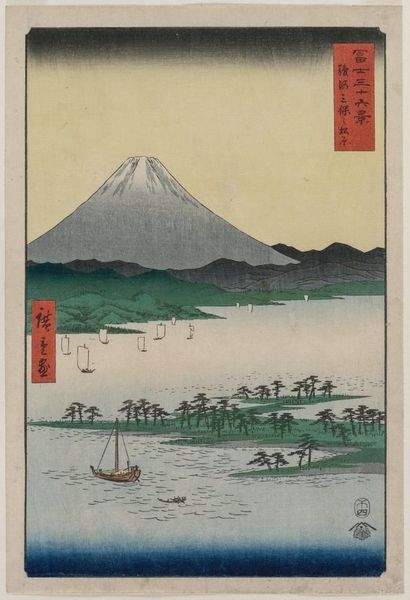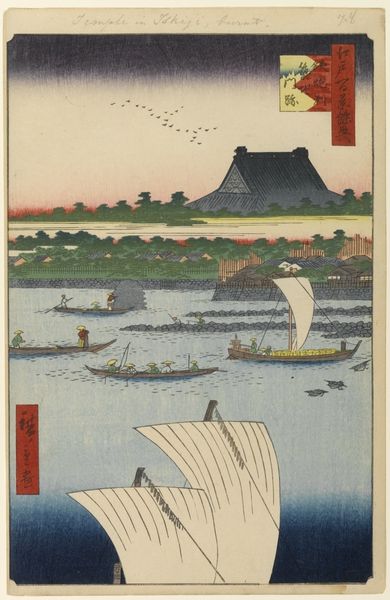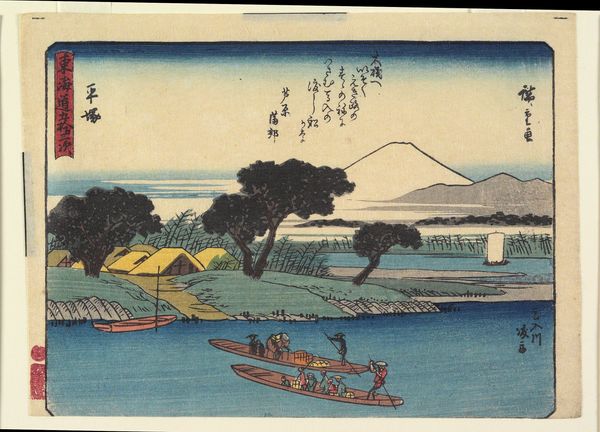
#
water colours
# print
#
asian-art
#
landscape
#
ukiyo-e
#
coloured pencil
#
watercolor
Copyright: Public domain
Editor: This is Utagawa Hiroshige’s "96. Horie and Nekozane," created as a woodblock print in 1857. It's striking how the rooftops are mirrored in the water. What can you tell me about it? Curator: Consider the labour involved. Each print required a carver who translates Hiroshige’s design onto wood. And a printer, layering colours precisely. Ukiyo-e prints like this one circulated widely, contributing to a boom in Japonisme in Europe and beyond. Editor: Japonisme, like Van Gogh collecting Japanese prints, right? Curator: Exactly. Now, look closely. Can you discern the human impact on this landscape? Are we looking at pristine nature or a built environment shaped by specific economies? Editor: Well, you see the houses… all uniform in a row along the river. Someone’s transporting goods by boat. Is the water a resource being used for trade? Curator: Precisely. Ukiyo-e were not merely artistic expressions but commodities reflecting—and shaping—contemporary life. The landscape itself, and our perception of it, are products of social and economic forces. What kind of consumption was this type of print for? Editor: Affordable art for the masses, almost like posters or magazines today? That gives it such a different dimension than seeing it as just a pretty scene. I'm beginning to see how interconnected art, labour, and commerce are! Curator: And how the means of production deeply affects the reception of the artwork itself. Thanks to this perspective, the river and village seem richer in meaning than when we started.
Comments
No comments
Be the first to comment and join the conversation on the ultimate creative platform.
